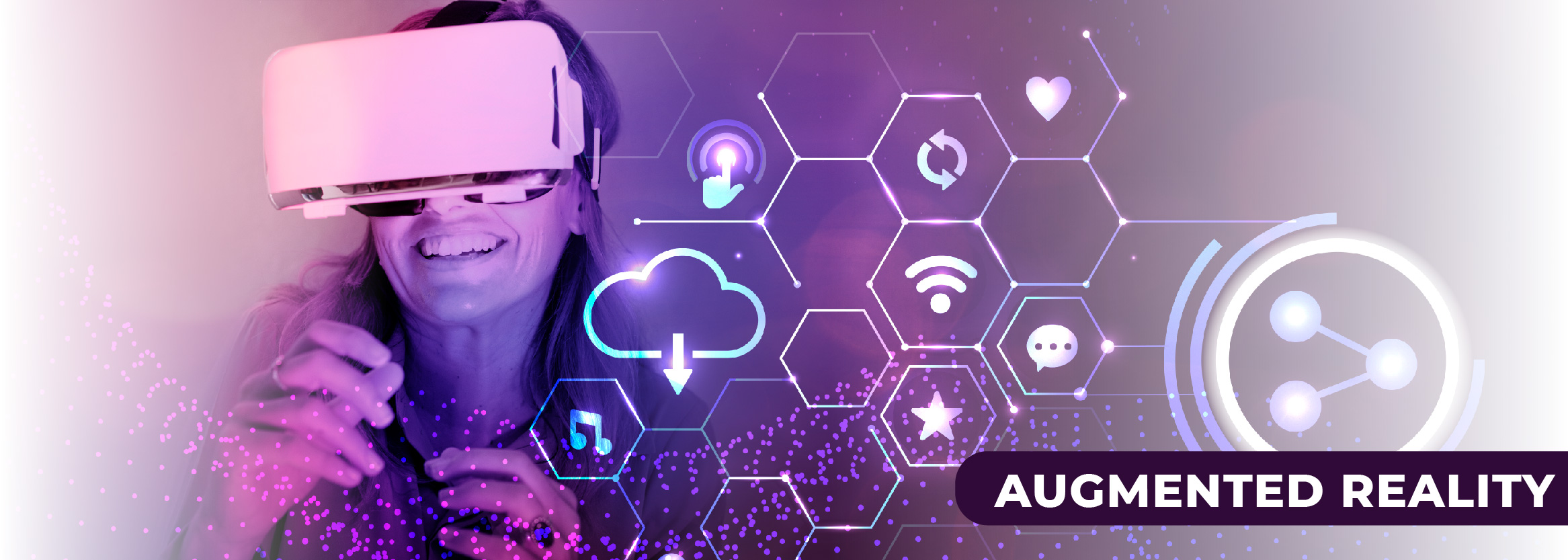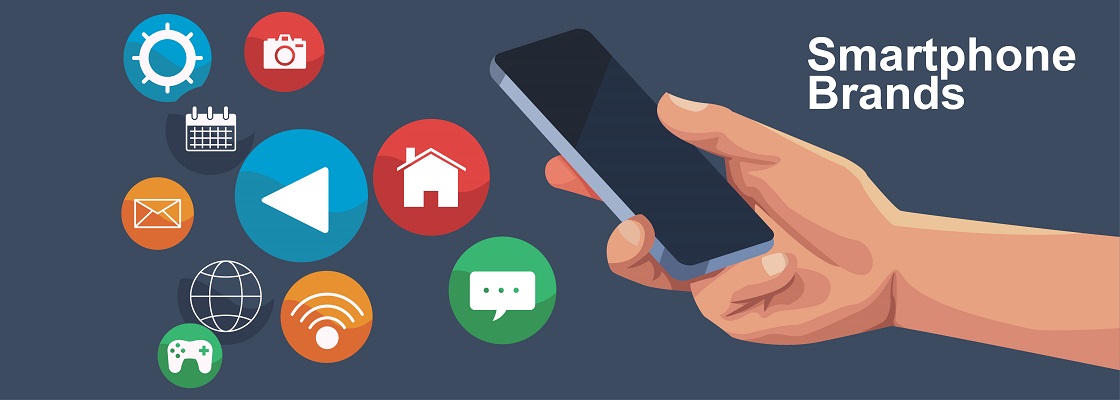Digital data and the live, in-the-moment world are smoothly combined with the aid of augmented reality (AR) technology. The camera on a smartphone or an augmented reality headset can combine the real environment with an animation or overlay image by adding sound, visuals, haptic feedback, or even smell to the existing natural world. As a subset of the larger extended reality (XR) business, the worldwide augmented reality (AR) market is expected to grow dramatically over the coming years.
Mobile AR
Mobile AR is a significant market segment that makes use of the enormous amount of smartphones, tablets, and other mobile devices that people across the world own or have access to. By 2024, there are projected to be 1.73 billion mobile AR users, up from an estimated 800 million in 2021. Growth, including digital AR experiences, is anticipated in both the business and consumer markets. The location-based augmented reality mobile game Pokémon Go is one of the best-known examples of this, with its in-app transactions representing a sizable amount of consumer mobile AR expenditure.
AR headsets and applications
Equipment like headsets and glasses are used to enable augmented reality. Sales of AR glasses are anticipated to reach 410 thousand units in 2021 and increase to 3.9 million by 2024, with a sharp increase in purchases for usage in a variety of industries. It is anticipated that business spending on AR glasses would increase from slightly over two billion dollars in 2021 to about 12 billion dollars by 2024. Vendors of AR headsets like Microsoft, Magic Leap, and Vuzix keep innovating and creating products that enable the rising use of AR across various industries.
Automotive, Aerospace & Defense, Industrial & Manufacturing E-commerce & Retail, Education, Healthcare, Gaming & Entertainment, are all key sectors.
The market for augmented reality might be characterized as a mostly untapped market with enormous potential. Vendors are making significant investments in research and development (R&D) to create cutting-edge AR solutions for everyday uses as well as for businesses to streamline workflows and improve procedures. Technology and e-commerce enterprises are especially influenced by the capacity to provide an immersive experience to choose fresh, cutting-edge solutions based on AR technology. A few of the leading companies in the market for augmented reality are Google LLC, Microsoft, Blippar Limited, Sony Corporation, Niantic Inc., Infinity Augmented Reality Limited, Magic Leap Inc., Zappar Limited, Wikitude GmbH, and many more.
North America Augmented Reality Industry:
During the forecast period, North America is anticipated to gain the most revenue share. The need for immersive technologies in the region is rising as a result of increased investment. Similar to this, the American government is eager to promote the use of immersive technology, thereby strengthening the region’s grasp on the augmented reality industry. For instance, in 2019 the U.S. Defense Advanced Research Projects Agency contacted IMT Atlantique to produce comparable smart contactless lenses for the U.S. military after expressing interest in the company.
Europe Augmented Reality Industry:
The market has enormous potential to grow throughout Europe. As a result of a large number of AR/VR businesses present, the U.K. is predicted to dominate the market. For instance, Renault Trucks received remote expert augmented reality solutions from Livestream Technologies in October 2020. This will boost output and uptime and also enable remote support services for dealerships throughout the UK and Ireland.
APAC Augmented Reality Industry:
The projection period is expected to see substantial growth in the Asia Pacific region. The thriving manufacturing, logistics, automotive, and gaming sectors are projected to support regional market expansion. Due to the existence of low-cost hardware producers, China is predicted to dominate the industry. Due to rising consumer demand, India is also predicted to present chances for market expansion. For instance, Livestream Technologies increased its investment in Japan in June 2021 to accommodate the region’s expanding consumer base in APAC. In Japan, augmented reality users have increased by nearly 300% since 2019.
South America Augmented Reality Industry:
Latin America is anticipated to grow rapidly as a result of partnerships and cooperation with US-based businesses. For instance, Grupo Boticário, a Brazilian cosmetics manufacturer, will introduce AR smart glasses at its manufacturing facility in October 2020 in partnership with Vuzix Corporation.
MEA Augmented Reality Industry:
In the upcoming years, the Middle East and Africa are projected to gain momentum. The market is anticipated to grow as the technology is adopted by the education, travel & tourism, media & entertainment, healthcare, and other sectors. For instance, in September 2020, Kellogg Company and Blippar worked together to launch a new product across the GCC. The business hopes to engage with clients and create new market prospects with the use of modern WebAr technology.
Top 5 Companies:
Microsoft Corp.
A software firm called Microsoft Corporation creates, licenses, and maintains a range of software products. Operating systems, cross-device productivity apps, server applications, business solutions apps, desktop administration tools, and software development tools are all included in the company’s product range. For computer system integrators, it additionally provides training and certification. Distributors, OEMs, resellers, resellers, online media, and Microsoft retail locations are just a few of the avenues via which Microsoft markets, sells, and distributes its products. It offers cloud-based services, assistance, and consultancy. Business activities at Microsoft are carried out throughout the Americas, Europe, and Asia-Pacific. The business’s main office is in Redmond, Washington.
Google LLC
Search engine technology, e-commerce, cloud computing, online advertising, artificial intelligence, quantum computing, computer software, and consumer electronics are the main areas of interest for Google LLC, an American multinational technology firm. It has been referred to as the “most powerful corporation in the world” and one of the most valuable brands in the world due to its market leadership, information gathering, and technological advantages in the artificial intelligence field. Along with Apple, Amazon, Microsoft, and Meta, it is regarded as one of the Big Five American technological corporations.
Sony Group Corporation
Most often known as Sony and stylized as SONY, Sony Group Firm is a Japanese global firm with offices in Minato, Knan, Tokyo, Japan. It is a prominent player in the technology sector and one of the largest manufacturers of consumer and commercial devices, consoles, and video game publishers. Sony Entertainment Inc., one of the most comprehensive media companies, is a subsidiary of one of the major music companies, the second-largest record label, as well as the third-largest film studio. The largest technology and media company in Japan is this one. It is also regarded as the largest cash-rich Japanese firm, with net excess cash of 2 trillion yen.
Blippar Group Limited
Blippar, one of the earliest tech unicorns in the UK, focuses on creating and disseminating augmented reality (AR) content for mobile devices and the web.
Blippar’s product solutions, which have a strong focus on mobile and WebAR, also include bespoke AR content creation in addition to patented content creation and publication platform, Blippbuilder, which enables users to independently produce and share AR content. The company’s headquarters are in London.
For clients such as Porsche, GSK, Jaguar Land Rover, Cadbury, PepsiCo, L’Oréal, and Procter & Gamble, Blippar has developed augmented reality advertisements. These commercials also featured the first AR product launch in history, carried out in collaboration with OnePlus Nord.
Niantic Inc.
American software developer Niantic Inc. has its headquarters in San Francisco. For creating the augmented reality mobile games Ingress and Pokémon Go, Niantic is well known. As a Google internal venture, Niantic Labs was the name given to the business when it was founded. When Google reorganized under Alphabet Inc. in October 2015, the corporation became a separate legal entity. Additional Niantic locations can be found in Bellevue and Los Angeles.
Major Augmented Reality (AR) Innovations that Will Affect Events, Exhibitions, and Venues
The augmented reality (AR) technology platform is still in its infancy but is already having a significant impact on the events sector.
Consumers may now enjoy the material in novel and fascinating ways thanks to augmented reality (AR), which uses a device to view a real-world environment that is enhanced by other digital features.
Here are five significant advances in augmented reality that, over the next few years, will affect venues, events, and exhibitions.
The Release of AR Smartphones
The use of augmented reality (AR) at trade shows has been on the rise for some time, but the dearth of suitable mobile platforms has left many event managers unimpressed. Expo exhibitors now have additional chances to engage guests and customers through immersive experiences thanks to the introduction of AR-capable smartphones.
Examples of smartphones with native AR features that are completely integrated with Google’s Tango platform include the Asus ZenPhone and Lenovo’s Phab2 Pro.
Google’s Tango, an augmented reality computing platform, was introduced in 2014 and is now being incorporated into a variety of consumer electronics like smartphones and tablets. They have produced the first Tango-capable smartphones available on the market with the introduction of the aforementioned products.
This demonstrates Google’s significant investment in technology as well as the fact that augmented reality is on the verge of becoming a standard feature of upcoming smartphones. Attendees will be more prepared to utilize the technology when they are implemented into a growing number of devices.
Better and More Potent AR Chips
Up until recently, the creation of new AR chipsets was slow. But as consumer interest in AR gadgets grows, so does the demand for chip technology that works with them. With the release of new devices like the Qualcomm Snapdragon 835 for Android and anticipated announcements from AMD and Intel, this year will mark the turning point in the development of AR hardware.
While the average user may not find this to be the most thrilling news, developers are undoubtedly paying attention to the technology’s expanding possibilities. Developers will produce better-performing augmented reality this year, enabling trade fair exhibitors to the more sophisticated technology that is adaptable enough to satisfy their various needs.
A Powerful Tool for Retail Exhibitors: AR
Retailers have now begun embracing AR as a result of the shift the technology is undergoing. In contrast to Virtual Reality (VR), augmented reality (AR) enhances the real environment with images, text, video, graphics, and more, making it particularly useful in the retail industry. Retailers may easily use AR to offer imagery and technology to assist customers in making more informed selections they can be confident in.
Given that 77% of Americans own a smartphone; it makes total sense for retail establishments to use them as promotional tools. Additionally, these characteristics may aid in providing timely, pertinent deals, coupons, or deal alerts.
Industries are Employing an Increasing Number of AR Developers
Over the past year, the need for AR developers has skyrocketed, and according to Salesforce, this field of technology offers some of the best wages. You can expect that demand for AR developers will increase in the coming months and years due to the industry’s expansion.
VR Loses to AR in the Popularity Contest
For the previous five years, VR and AR have been developing somewhat concurrently, but that is now over. While sophisticated headsets and other devices have been produced for VR, AR is more appropriate for regular technology users. After all, it’s unlikely that you’d wear an Oculus Rift while strolling through an exhibit hall.
Augmented reality (AR) in education makes it easier to understand knowledge, leverages technology to let teachers illustrate virtual demonstrations, and makes learning more fun. This speeds up the learning process and encourages student participation.
Hardware and software sales for augmented reality (AR) glasses for consumers and businesses totaled US$ 1.85 billion in 2021. This is expected to increase to 3.78 billion dollars in 2022 and then increase to 35.06 billion dollars in 2026.
The mobile augmented reality (AR) industry is anticipated to reach a value of US$ 12.45 billion in 2021. Its size is anticipated to reach close to 17 billion dollars in 2022 before increasing to more than 36 billion dollars by 2026. The market consists of visualization software, ads, and digital commodities like in-app purchases for augmented reality applications.
In comparison to 2015, there will likely be 1.5 billion additional mobiles augmented reality (AR) consumer units worldwide in 2024. By 2022, 1.1 billion mobile AR user devices are projected to exist worldwide.
Globally, 1.5 billion individuals regularly used augmented reality (AR) in 2021. Global AR consumption is anticipated to reach 4.3 billion by 2025.
Spending on consumer mobile augmented reality (AR) experiences reached US$1.38 billion in the United States in 2020. Consumer mobile AR spending is anticipated to reach US$1.93 billion in 2021 before increasing to US$ 4.18 billion by 2024.
According to a recent study on the trends influencing the future of retail, by 2025, over one-third of American consumers will have utilized AR-powered devices when making online purchases. When purchasing online, AR technologies allow for virtual product browsing. According to the report, while the predicted use of AR was as high as 45% in nations like Saudi Arabia and the United Arab Emirates, it was far lower in Europe.
In 2021, a sizable portion of the respondents to the survey-74 %- will predominantly utilize augmented reality (AR) at home for communication, notably on social media platforms. In the same year, another 55% frequently used augmented reality for gaming at home.
Trends in Augmented Reality to Watch in 2022
For many industries, augmented reality, or AR, has been a game-changer. While virtual product displays have benefited the retail sector, augmented reality (AR) is being used in healthcare to improve patient care, and the benefits don’t stop there. Whatever business you work in; AR provides a unique set of advantages. Here are some current trends in augmented reality technology and how they will affect society in 2022 and beyond.
Navigation in AR
Indoor and outdoor AR navigation is now more accessible and useful than ever. Technology advancements like Bluetooth Low Energy (BLE) antennas, ultra-wideband (UWB), and Wi-Fi Round Trip Time are largely to blame for this. One of the best uses of this technology is for directions in enclosed spaces like warehouses and airports. In malls, a customer can potentially benefit from an augmented reality shopping experience.
AR in the Medical Industry
By offering hands-free equipment and AI-based diagnostic tools, augmented reality and artificial intelligence will reportedly transform the healthcare industry. By showing information to a surgeon, for instance, certain technology enables them to operate with both hands.
Remote Assistance
IT professionals can use augmented reality to give customers 3D instructions on-screen. A helpful feature for electronics and car interiors, among other products, AR guides can employ object recognition to find things and explain their use to the user.
Automobiles that Use Augmented Reality
Vehicle safety has been significantly impacted by the use of augmented reality in automobiles. Users of Tesla Motors’ Full Self-Driving Beta may see how the vehicle’s potent array of cameras continuously scans the area around it to look for hazards and assess the scene.
Augmented Reality Glasses and Headsets
People in the IT industry have been fascinated with AR glasses and headsets for a long. Despite being widely touted as the augmented reality technology of the future and having been used in practical applications, they have not yet attained general adoption. They are used in corporate and business solutions.
AR in Education
Statistics On Augmented Reality Technology
- Microsoft signed a contract in 2021 to give the US Army 120,000 HoloLens-based devices.
- More than 25% of smartphones are ARCore or ARKit compatible.
- By 2026, sales of wearables and smart glasses are expected to expand by as much as 71.3% CAGR.
- Automotive giants like Audi, Tesla, Volvo, Mercedes, and Toyota will all incorporate augmented reality into their products.
- Between 100 million and 250 million Android phones now support augmented reality.
- Comparing the two platforms, iOS has more AR-based apps.
- 13 million downloads were registered for ARKit-only apps in the first six months after their introduction.
- The introduction of Metaverse will accelerate the uptake of augmented reality.
The Important Variables for AR Engagement
- In order to help the sales stage of the customer journey, 16% of merchants use AR. Consumers today claim that having access to AR and VR for product testing before making a decision can aid in decision-making. Additionally, 3D technology can boost conversion rates by as much as 40%, giving modern customers more confidence to make purchases.
- 39% of businesses claim to employ AR during the consideration stage. Showing 3D models of your products to customers in AR is a fantastic way to encourage them to make a buy. You could utilize augmented reality to demonstrate to customers how a new piece of furniture would look in their residence, for example.
- Customers are generally optimistic about AR and VR, with awareness of these technologies hovering around 70%. Although XR technology is still in its infancy, users are eager to adopt any accessible solutions if they result in a better customer experience.
- A total of 15% of US consumers-or about 83.1 million people-using augmented reality on a regular basis. AR and VR experiences will seem more natural in CX as use cases expand. Additionally, there are roughly 1 billion AR customers globally, so any firm can gain.
- 32% of shoppers now utilize augmented reality when they purchase. AR gives companies the chance to research their products’ benefits and distinctive selling points before committing to a purchase. In a time of social distance, these instruments are especially useful.
- Customers who offer AR or XR experiences in their stores are preferred by 61% of shoppers. Giving clients the option to interact with your brand through an app or try out 3D representations of your products could increase sales.








